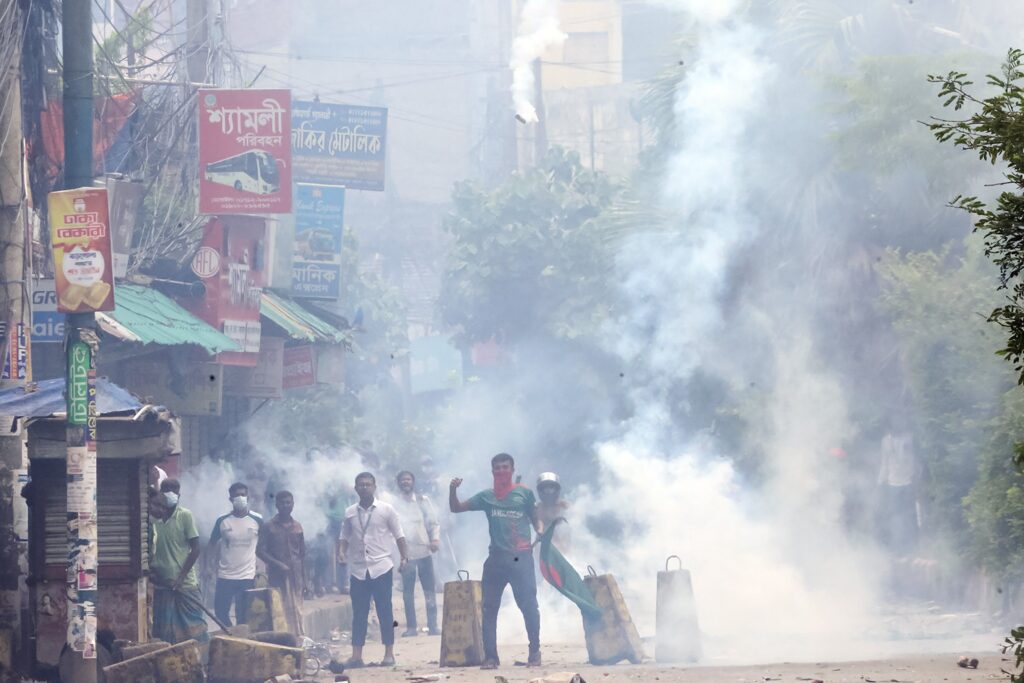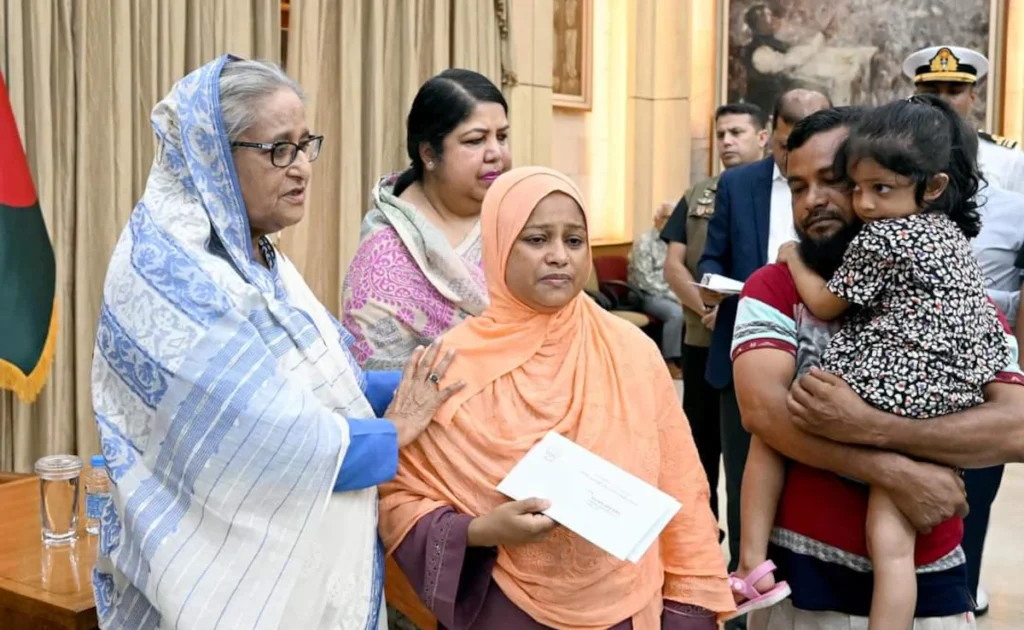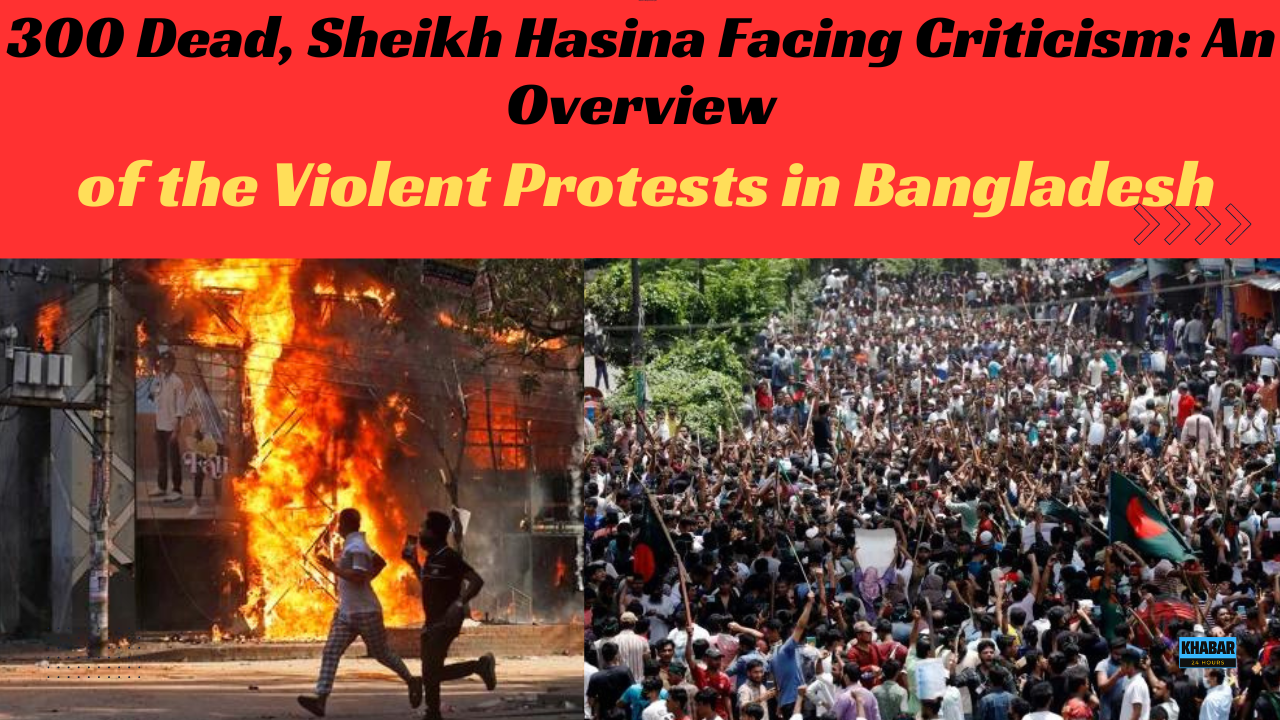On Sunday in Bangladesh, at least 98 people were killed and hundreds were injured as police deployed tear gas and rubber bullets to disperse tens of thousands of protesters demanding the resignation of Prime Minister Hasina.
During her two terms and 20 years as Prime Minister of Bangladesh, the ongoing protests, which have resulted in over 300 deaths, represent perhaps Sheikh Hasina’s most significant challenge. On Sunday alone, at least 98 people were killed and hundreds injured as police used tear gas and rubber bullets to break up tens of thousands of demonstrators calling for her resignation. This violence marked one of the deadliest days in Bangladesh’s recent history of civil unrest, surpassing the 67 deaths reported on July 19 during student protests against the government job quota system.
The unrest, which began late last month, intensified when student activists from Dhaka University, the country’s largest, clashed violently with police and pro-government counter-protesters. The protests stem from a controversial quota system that reserves up to 30 percent of government jobs for the relatives of veterans from Bangladesh’s 1971 war of independence against Pakistan.

Protesters argue that the current quota system is discriminatory and benefits supporters of Prime Minister Hasina’s Awami League party. They are calling for a merit-based system to replace the existing quota.
The quota system, established in 1972 and briefly abolished in 2018 before being reinstated, has long been a source of controversy. Critics argue that it disproportionately benefits supporters of the Awami League and restricts opportunities for other qualified candidates. Prime Minister Hasina’s public statements have exacerbated tensions, fueling intensified protests.
These demonstrations have expanded beyond the quota issue to become a broader anti-government movement, garnering support from various segments of society, including film stars, musicians, and garment manufacturers. Rap songs and social media campaigns have further amplified the calls for Hasina’s resignation.
Prime Minister Hasina, who has been in power since 2009 and won a fourth consecutive term in January amid a boycott by the main opposition Bangladesh Nationalist Party, faces allegations of consolidating power through state institutions and suppressing dissent. The recent violence underscores the rising dissatisfaction and demands for change among the Bangladeshi people.
Rapid Escalation
The protesting students have planned a “March to Dhaka” today.
In 39 districts, houses of public representatives, 20 Awami League offices, police stations, and other government facilities have been attacked, vandalized, and set on fire. Clashes between protesters and Awami League leaders, along with their associated organizations, have been reported in several districts.
Residences and offices of ruling party ministers, state ministers, parliamentarians, and Awami League leaders have been vandalized in at least 14 locations.

In response to the unrest, the government imposed an indefinite nationwide curfew starting at 6 pm on Sunday, marking the first such action during the current protests. A three-day general holiday was also announced, beginning Monday. Additionally, internet services were shut down.
Protesters escalated the violence by blocking major highways and launching a non-cooperation campaign. Police stations and ruling party offices became targets, with severe clashes and significant casualties reported. In Sirajganj, thirteen policemen were beaten to death, and the homes of two lawmakers were set on fire.

The unrest spread beyond Dhaka, affecting the entire country. In Munsiganj, two construction workers were killed and 30 injured in clashes involving protesters, police, and ruling party activists. Further violence in Pabna, Feni, Lakshmipur, Narsingdi, Rangpur, Magura, and other districts resulted in additional casualties. In Dhaka, a hospital was vandalized and four garment factories were set ablaze. The government’s decision to shut down high-speed internet services, including social media platforms, exacerbated the chaos.
Bangladesh’s telecom providers were instructed to disable 4G services, effectively cutting off internet access. Although protests initially subsided after the Supreme Court abolished most quotas, they resumed sporadically, with demands for justice for the victims.
ALSO READ : Nepal Plane Crash: Saurya Airlines Flight Crashes in Kathmandu; 5 Bodies Recovered So Far
Bangladesh’s Chief of Army Staff, General Waker-Uz-Zaman, directed officers to protect lives, property, and state installations. Despite this, protesters continued to defy the curfew, resulting in further clashes and casualties.
The international community, including India, has issued travel advisories urging nationals to avoid traveling to Bangladesh.


